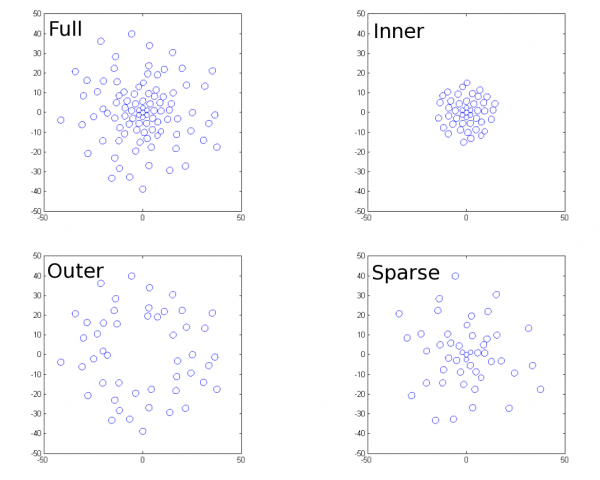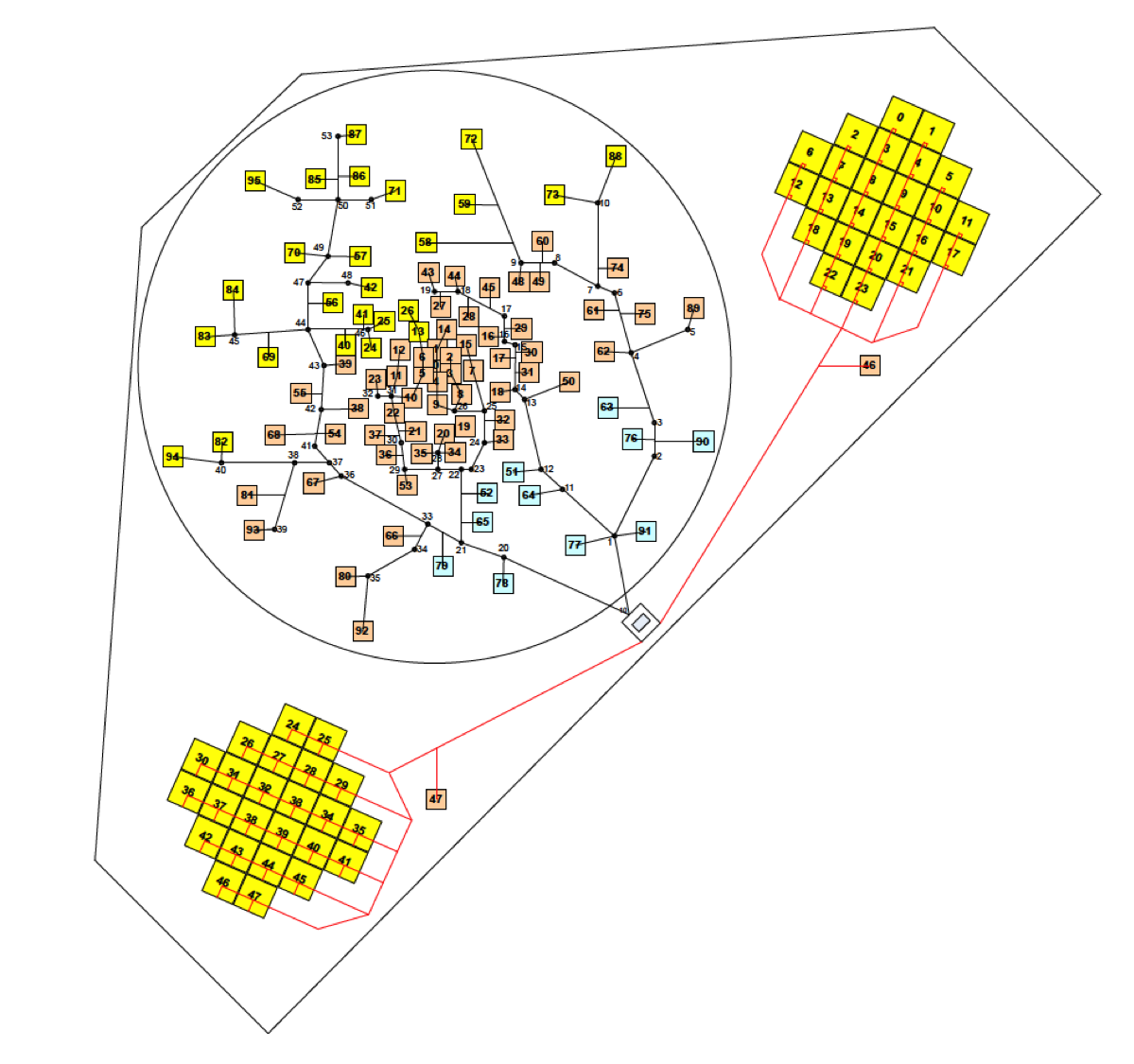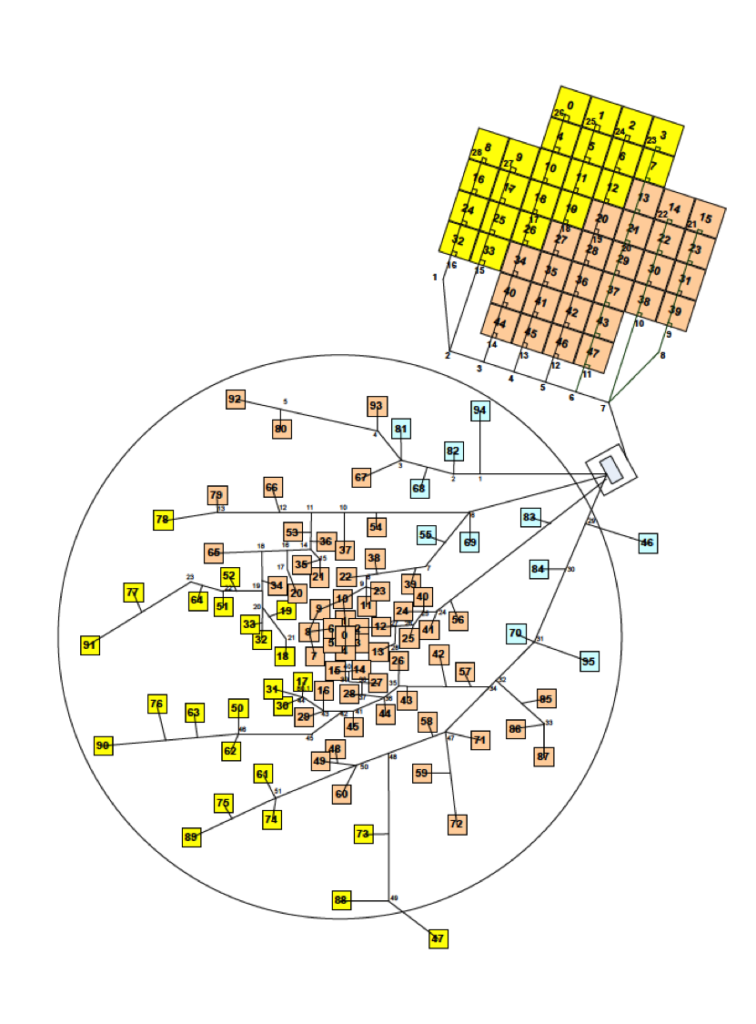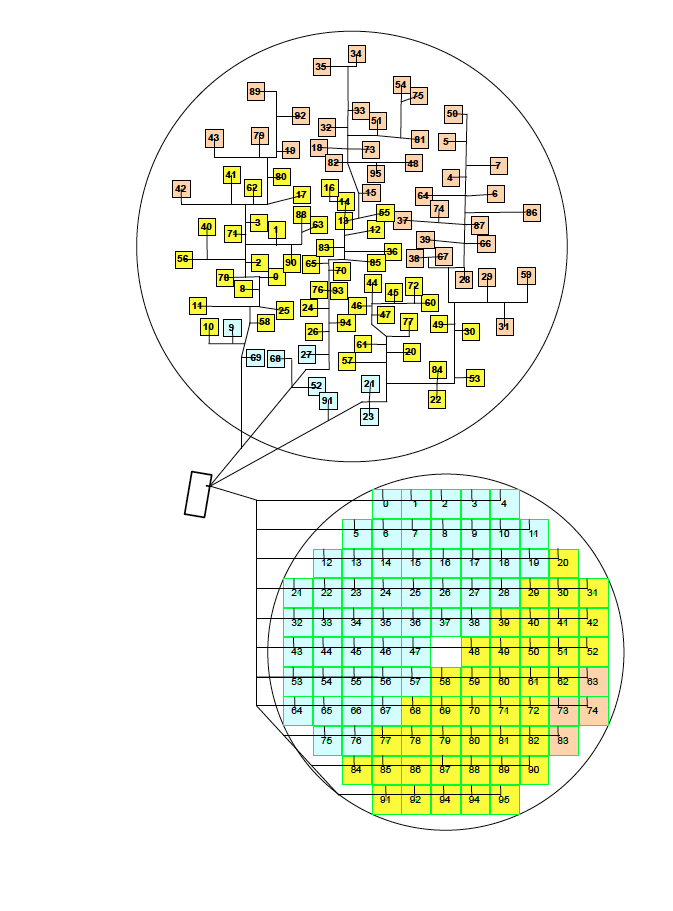Currently, LOFAR consists of 24 Core stations around Exloo, 14 Remote stations distributed over the Netherlands and 14 International stations distributed over Europe.
Core Stations
Core stations consist of 48 HBA's and 96 LBA's and a total of 48 digital Receiver Units (RCU's).
The HBA's are arranged in two 24-element fields with a diameter of 30.8 m each, straddling an 87 m diameter LBA field. The two 24-element fields can be used either as individual stations or their signals can be combined to form one station.
Configuration of LBA dipoles
Although both the Dutch (core- and remote-) stations and the international stations have 96 dual polarization dipoles in their LBA field, the limited number of RCU's in the Dutch stations means that only 48 dual polarization (or 96 single polarization) signal paths can be used in the Dutch (core- and remote-) stations. The international stations do not have such a limitation.
The Dutch stations have the following options regarding the LBA configuration:

- LBAOUTER
- Select the outermost 48 antennas. Array width: 87 m. This mode of operation is intended for observations below 40 MHz.
- LBAINNER
- Select the innermost 46 antennas plus 2 additional calibration antennas. The beam is formed from the 46 inner antennas. The calibration antennas are only used to resolve out the Milky Way for station calibration. Array width: 30 m. This mode is intended for observations above circa 40 MHz.
- LBASPARSE
- Half of the innermost 48 antennae, plus half of the outermost 48 antennae. This gives a sparsely filled array with the full station width of 87 m. Useful for intra-station baseline work / low resolution all-sky work.
- LBAX
- All X dipoles (NE to SW) from the 96 antennae.
- LBAY
- All Y dipoles (NW to SE) from the 96 antennae.
Configuration of HBA Tiles
There are several options for configuring the HBA tiles. The majority of these configurations apply only to the core stations where two HBA fields are available.
- relevant for observations including core stations
- HBAzero / HBAone
- Uses a single HBA field, zero or one, from the core stations, and the full HBA field from remote and international stations.
- HBAdual
- The data from each HBA field in a core station are correlated as separate stations in the CEP correlator. This configuration provides many more short baselines in the core.
- HBAjoined
- The data from each HBA field in a core stations are correlated at station level, before the data are returned to CEP. In this mode the beam of each station has a non-uniform shape.
- relevant for observations including remote stations
In addition, a special mode has been designed, designated by the "inner" tag (HBAzero_inner etc). This indicates that only the inner 24 tiles of the Remote stations are used, to match the configuration of each Core station HBA field. This tag does not operate on the international stations.


